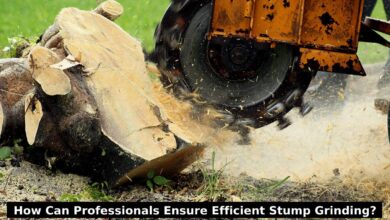Step Up Your Safety: How to Fix Loose Stairs in Your Home
Stairs are one of those parts of a home we often take for granted—until something goes wrong. If you’ve noticed that your stairs are creaking, wobbly, or outright loose, it’s essential to take action. Loose stairs aren’t just an annoying noise; they can be a safety hazard. The good news is that fixing loose stairs is a manageable DIY project for homeowners. In this guide, we’ll walk you through the steps to stabilize your stairs and ensure a safer, quieter home.
Why Fixing Loose Stairs Matters
Over time, the structure of your stairs can weaken due to regular use, age, or poor construction. Loose stairs not only increase the risk of accidents but can also lead to more costly repairs down the line if not addressed. Whether you’re planning a full staircase remodel Gig Harbor, WA, or just need a quick fix, tackling loose stairs early can save you time and money.
Tools You’ll Need:
- Hammer
- Screws and a drill
- Wood glue
- Wood shims
- Pry bar (optional)
- Carpenter’s square
- Measuring tape
Step-by-Step Guide to Fixing Loose Stairs
1. Identify the Problem Areas
The first step is to determine which parts of the stairs are loose. Walk up and down the stairs slowly, listening for creaks and feeling for movement. Are the treads (the part you step on) loose? Or is it the risers (the vertical parts between each step)? Knowing where the problem lies will help you decide which method to use.
2. Tighten Loose Screws or Nails
In some cases, loose stairs are caused by nails or screws that have come loose over time. If you find loose nails, use a hammer to drive them back into place. For loose screws, tighten them using a drill. However, nails tend to loosen again, so it’s often better to replace them with screws for a longer-lasting fix.
3. Reinforce the Treads and Risers
If tightening the screws or nails doesn’t completely solve the issue, it may be time to reinforce the stairs. For loose treads, drill additional screws into the corners where the tread meets the riser and the stringer (the support on either side of the stairs). Make sure to drill at an angle so the screw can grab the wood securely.
You can also apply wood glue along the joints where the tread meets the riser and stringer. This extra adhesive will help hold everything in place and prevent further movement.
4. Use Wood Shims for Extra Support
For stairs with significant gaps or looseness, wood shims can be your best friend. A shim is a small wedge of wood that can fill in gaps and provide added stability. Insert the shims into any visible gaps where the tread meets the riser or stringer. Once inserted, tap them lightly with a hammer until they’re snug, then apply wood glue for extra security.
Let the glue dry completely before trimming off any excess shim with a utility knife.
5. Replace Damaged or Warped Wood
If your stairs are severely loose due to damaged wood, simply tightening or reinforcing them may not be enough. Inspect each tread and riser carefully. If you see signs of warping, cracking, or rotting, it may be necessary to replace these parts.
To replace a tread, use a pry bar to carefully remove the old one, then measure and cut a new tread to fit the space. Use wood glue and screws to secure it in place. This is also a good time to replace any damaged risers as well.
6. Check the Stringers
The stringers are the backbone of your staircase, and if they’re loose, your entire staircase could be at risk. Tighten any screws or nails holding the stringers in place, and use a carpenter’s square to ensure they’re properly aligned.
If the stringers are damaged, you may need to consult a professional for a more extensive staircase remodel in Gig Harbor, WA. Structural issues with stringers are more complex and could require specialized tools or expertise.
7. Test Your Fixes
Once you’ve tightened screws, added shims, or replaced wood, test the stairs by walking up and down them a few times. Listen for any creaks and pay attention to any movement. If they still feel loose, you may need to reinforce certain areas further or add additional screws or glue.
When to Call a Professional
While most loose stair issues can be fixed with a little elbow grease, some problems may be beyond the average homeowner’s expertise. If your stairs are still wobbly after you’ve tightened everything, or if you’re dealing with extensive damage, it might be time to consider a staircase remodel. Professionals who specialize in staircase remodels in Gig Harbor, WA, can offer expert solutions that ensure long-lasting stability and safety.
Final Thoughts
Fixing loose stairs can be a rewarding DIY project that not only makes your home safer but also gives you peace of mind. With the right tools and a little patience, you can tackle this job yourself. However, for more extensive repairs from staircase contractor or a complete staircase remodel in Gig Harbor, WA, don’t hesitate to reach out to a professional who can provide expert advice and service.
Taking the time to repair your stairs now will help prevent accidents and more costly repairs down the road. So, grab your tools, follow this guide, and get started on making your home a safer place today!


